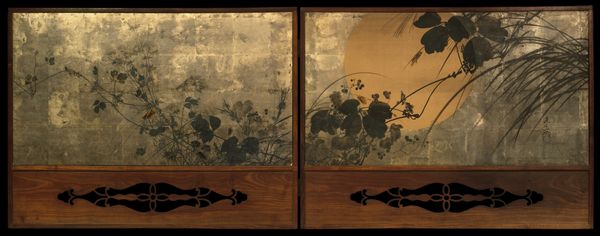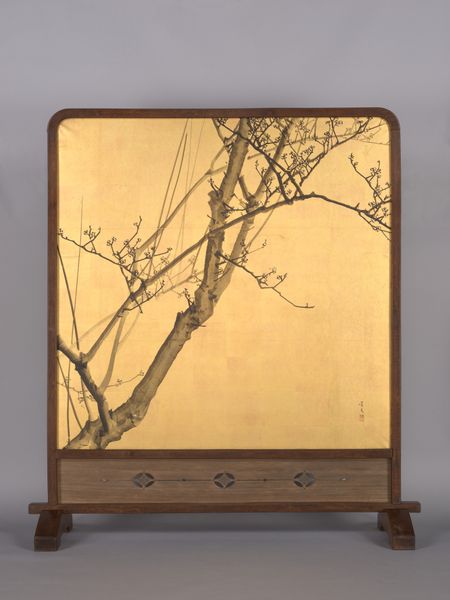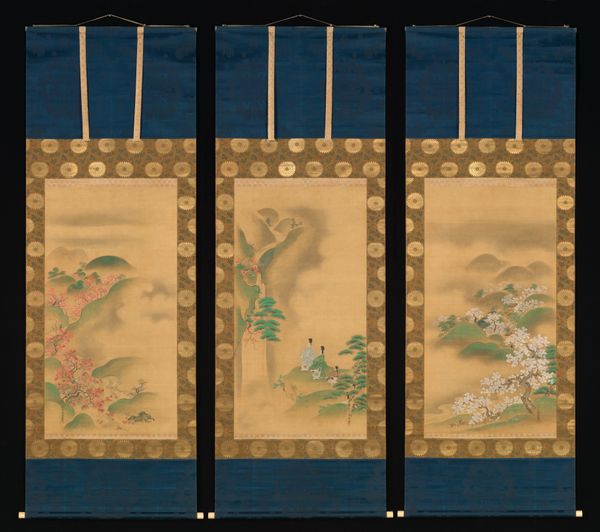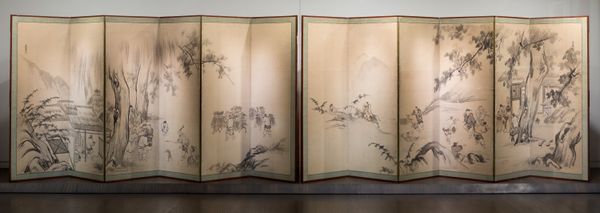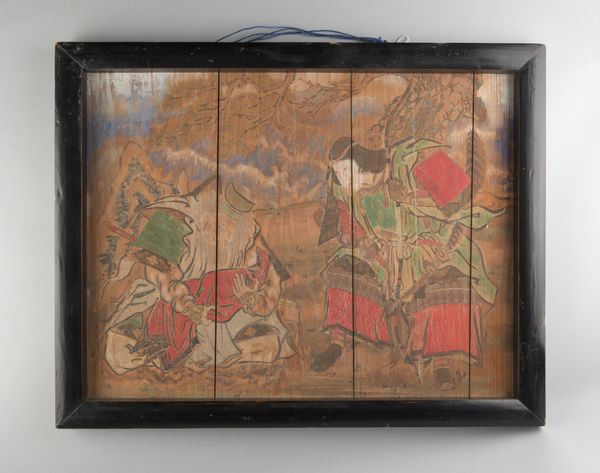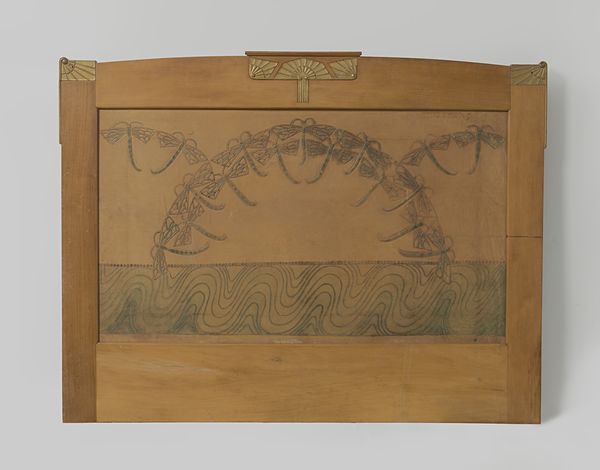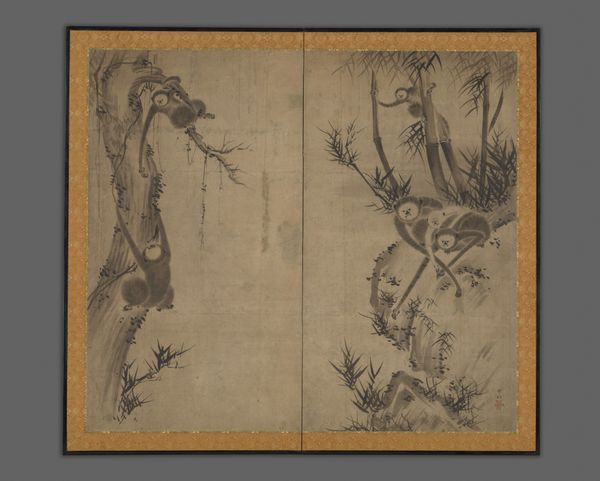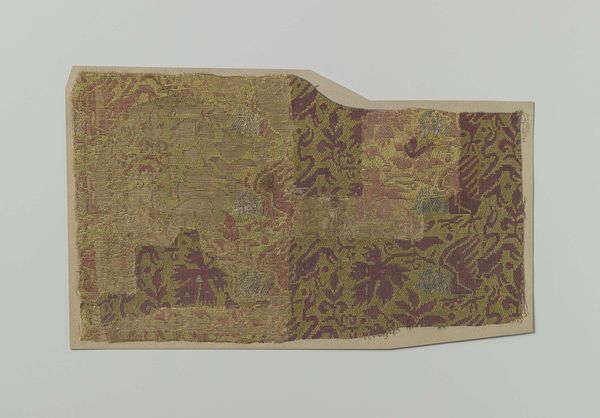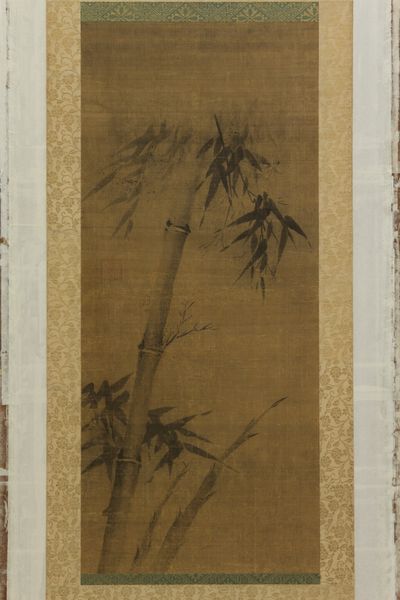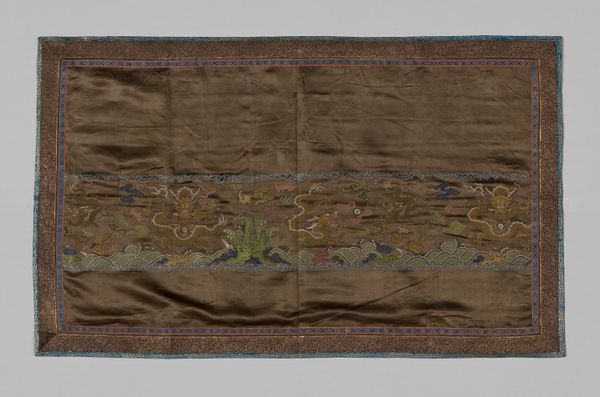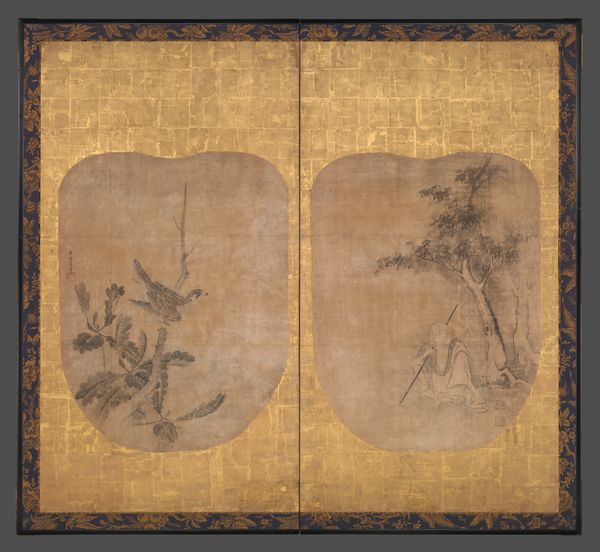
painting, paper, watercolor, ink
#
painting
#
asian-art
#
landscape
#
ukiyo-e
#
paper
#
watercolor
#
ink
Dimensions: Each 175 × 376 cm
Copyright: Public Domain
Hasegawa Sôya made this folding screen, “Willow Bridge and Waterwheel,” in Japan sometime in the 17th century. The artist worked with ink, color, and gold leaf on paper. Although seemingly simple, screens like this are technically demanding. Thin paper stretched over a lattice frame is at once delicate and strong. The gold leaf adds shimmer and value, but it also sets a tone. It’s not just a pretty surface; it's like a filter through which we see the depicted scene. Consider the labor that went into its making, from preparing the paper and the meticulous application of the gold leaf, to the skilled brushwork defining the willows and waterwheel. The artist would need absolute concentration, and also deep familiarity with the conventions of Japanese painting. It may seem like this object exists purely in the realm of aesthetics, yet it is also deeply rooted in process. Without understanding the making, we can only have a partial appreciation of the image.
Comments
No comments
Be the first to comment and join the conversation on the ultimate creative platform.
